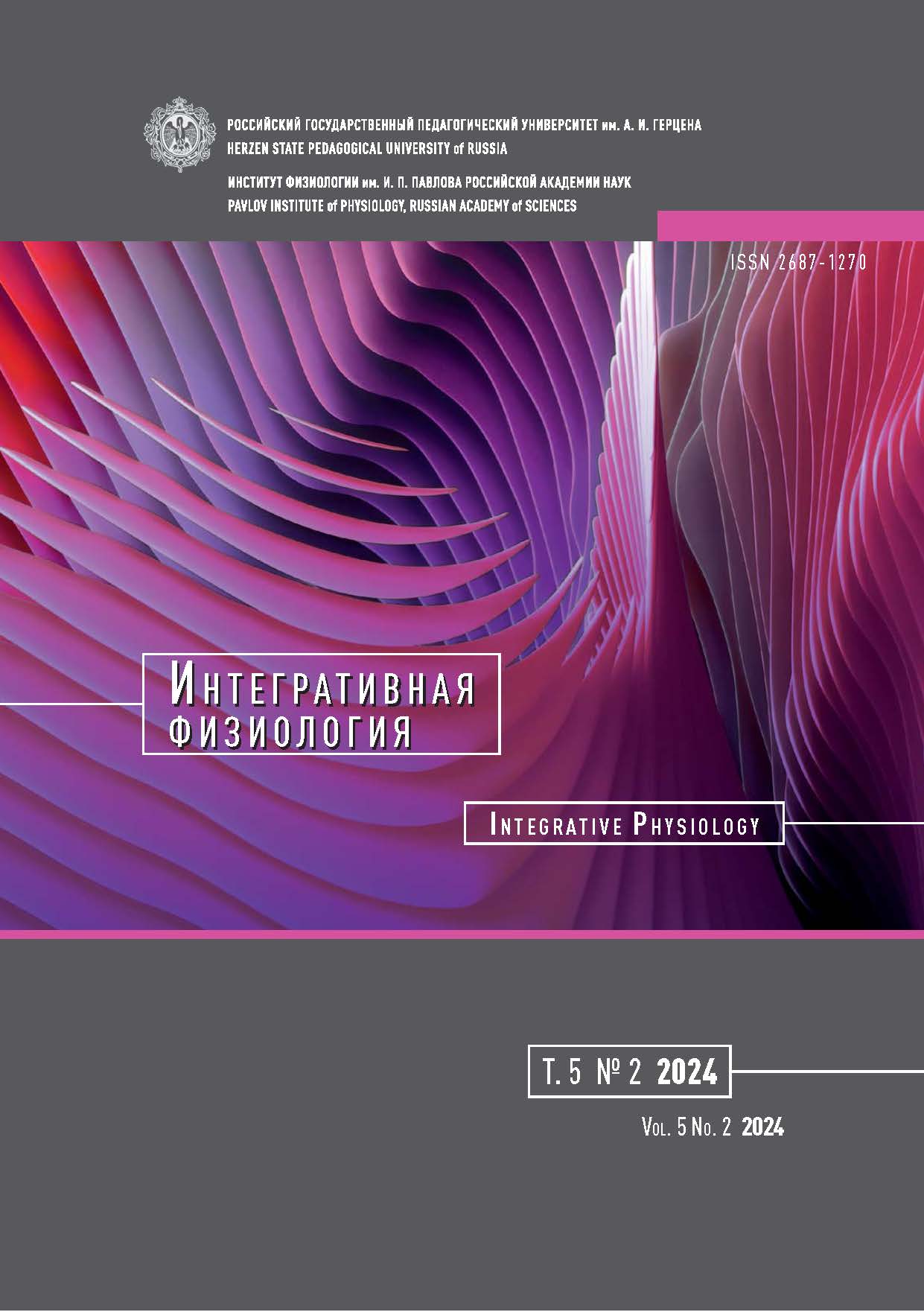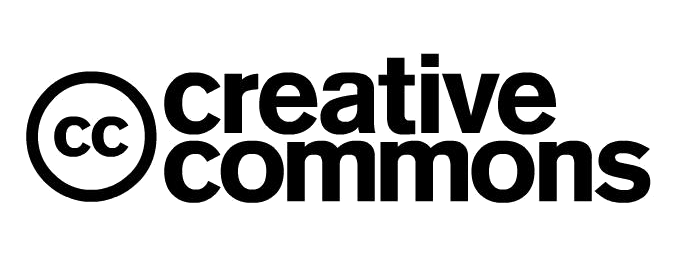Концепция двойной дихотомии мозга В. Д. Глезера и ее развитие: системы «Что?» и «Где?», межполушарная асимметрия, «схема тела», принципы кодирования, речь, правила и креативность
DOI:
https://doi.org/10.33910/2687-1270-2024-5-2-107-129Ключевые слова:
двойная дихотомия, зрение, системы «Что?» «Где?» «Как?», «схема тела», межполушарная асимметрия, принципы кодирования, речь, сценарииАннотация
Концепция двойной дихотомии мозга была сформулирована профессором В. Д. Глезером около 40 лет назад в его книге «Зрение и мышление» (1985) для описания способов обработки информации в зрительном мозге. В основе концепции лежит представление о существовании двух основных каналов обработки зрительной информации — информации о форме и информации о положении в пространстве (системы «Что?» и «Где?», локализованные, соответственно, в нижневисочной и заднетеменной коре головного мозга (первая дихотомия), которые функционируют по-разному в правом и левом полушарии головного мозга (вторая дихотомия). Такой способ анализа информации, как было показано в более поздних исследованиях, специфичен не только для зрения, но и характерен для остальных ведущих сенсорных модальностей. Этот способ проявляется также при функционировании системы зеркальных нейронов, обеспечивающей имитацию систем принятия решения и регуляции сценариев действий в префронтальной коре, а также в системе управления вниманием. Таким образом, современные данные свидетельствуют в пользу представлений о том, что концепция двойной дихотомии — это принцип работы мозга, описывающий основные пути обработки информации в коре больших полушарий головного мозга человека.
Библиографические ссылки
ЛИТЕРАТУРА
Анохин, П. К. (1980) Узловые вопросы теории функциональной системы. М.: Наука, 200 с.
Бернштейн, Н. А. (1966) Очерки по физиологии движений и физиологии активности. М.: Медицина, 349 с.
Бернштейн, Н. А. (1997) Биомеханика и физиология движений. Избранные психологические труды. Воронеж; М.: МОДЭК, Институт практической психологии, 608 с.
Боброва, Е. В. (2008) Современные представления о корковых механизмах и межполушарной асимметрии контроля позы (Обзор литературы по проблеме). Журнал высшей нервной деятельности им. И. П. Павлова, т. 58, № 7, c. 12–27.
Боброва, Е. В., Богачева, И. Н., Ляховецкий, В. А. и др. (2015a) Запоминание последовательностей движений правой и левой руки правшами и левшами. Физиология человека, т. 41, № 6, c. 70–77. https://doi.org/10.7868/S0131164615040050
Боброва, Е. В., Богачева, И. Н., Ляховецкий, В. А. и др. (2017) Запоминание последовательностей движений правой или левой руки правшами и левшами: векторное кодирование. Физиология человека, т. 43, № 1, c. 18–27. https://doi.org/10.7868/S0131164617010039
Боброва, Е. В., Ляховецкий, В. А., Богачева, И. Н. (2015b) Обучение и заучивание запомненных последовательностей движений правой и левой руки. Журнал высшей нервной деятельности им. И. П. Павлова, т. 65, № 2, с. 212–221. https://doi.org/10.7868/S0044467715020045
Боброва, Е. В., Ляховецкий, В. А., Борщевская, Е. Р. (2010) Роль правой руки в запоминании пространственной упорядоченности целей при воспроизведении последовательности движений. Журнал высшей нервной деятельности им. И. П. Павлова, т. 60, № 2, c. 162–165.
Боброва, Е. В., Ляховецкий, В. А., Борщевская, Е. Р. (2011) Роль «предыстории» в воспроизведении последовательности движений правой или левой руки: кодирование положений, движений, структуры элементов последовательности. Журнал высшей нервной деятельности им. И. П. Павлова, т. 61, № 5, c. 565–572.
Боброва, Е. В., Ляховецкий, В. А., Скопин, Г. Н. (2012) Обучение воспроизведению последовательностей движений правой и левой руки: кодирование положений и движений. Журнал высшей нервной деятельности им. И. П. Павлова, т. 62, № 4, c. 422–430.
Глезер, В. Д. (1985) Зрение и мышление. Л.: Наука, 246 с.
Глезер, В. Д. (1993) Зрение и мышление. 2-е изд. СПб.: Наука, 285 с.
Гурфинкель, В. C., Левик, Ю. C. (1991) Концепция схемы тела и моторный контроль. В кн.: A. В. Чернавский (ред.). Интеллектуальные процессы и их моделирование. Организация движений. М.: Наука, с. 59–105.
Гурфинкель, В. C., Левик, Ю. C. (1999) Мышечная рецепция и обобщенное описание положения тела. Физиология человека, т. 25, № 1, с. 87–97.
Лурия, А. Р. (1973) Основы нейропсихологии. М.: Изд-во Московского университета, 375 с.
Ляховецкий, В. А, Боброва, Е. В. (2009) Воспроизведение запомненной последовательности движений правой и левой руки: позиционное и векторное кодирование. Журнал высшей нервной деятельности им. И. П. Павлова, т. 59, № 1, с. 45–54.
Ляховецкий, В. А., Боброва, Е. В., Скопин, Г. Н. (2012) Ошибки перестановок при обучении воспроизведению последовательностей движений правой и левой руки: кодирование положений и движений. Журнал высшей нервной деятельности им. И. П. Павлова, т. 62, № 6, с. 681–691.
Ляховецкий, В. А., Карпинская, В. Ю., Боброва, Е. В. (2015) Выявление схемы пространственного кодирования по распределению ошибок памяти человека. Журнал высшей нервной деятельности им. им. И. П. Павлова, т. 65, № 4, с. 429–435. https://doi.org/10.7868/S0044467715040085
Минский, М. (1978) Структура для представления зрения. В кн.: П. Уинстона (ред.). Психология машинного зрения. М.: Мир, с. 249–338.
Abu-Akel, A. (2003) A neurobiological mapping of theory of mind. Brain Research Reviews, vol. 43, no. 1, pp. 29– 40. https://doi.org/10.1016/s0165-0173(03)00190-5
Alam, T. R. J. G., Arias, C., Jefferies, E. et al. (2024) Ventral and dorsal aspects of the inferior frontal-occipital fasciculus support verbal semantic access and visually-guided behavioural control. Brain Structure and Function, vol. 229, no. 1, pp. 207–221. https://doi.org/10.1007/s00429-023-02729-5
Aron, A. R., Robbins, T. W, Poldrack, R. A. (2014) Inhibition and the right inferior frontal cortex: One decade on. Trends in Cognitive Sciences, vol. 18, no. 4, pp. 177–185. https://doi.org/10.1016/j.tics.2013.12.003
Badre, D., Wagner, A. D. (2007) Left ventrolateral prefrontal cortex and the cognitive control of memory. Neuropsychologia, vol. 45, no. 13, pp. 2883–2901. https://doi.org/10.1016/j.neuropsychologia.2007.06.015
Bagesteiro, L. B., Sainburg, R. L. (2003) Nondominant arm advantages in load compensation during rapid elbow joint movements. Journal of Neurophysiology, vol. 90, no. 3, pp. 1503–1513. https://doi.org/10.1152/jn.00189.2003
Barrett, D., Hall, A. (2006) Response preferences for ‘‘what’’ and ‘‘where’’ in human non-primary auditory cortex. NeuroImage, vol. 32, no. 2, pp. 968–977. https://doi.org/10.1016/j.neuroimage.2006.03.050
Bartoli, E, Aron, A. R, Tandon, N. (2018) Topography and timing of activity in right inferior frontal cortex and anterior insula for stopping movement. Human Brain Mapping, vol. 39, no. 1, pp. 189–203. https://doi.org/10.1002/hbm.23835
Berlucchi, G., Aglioti, S. (1997) The body in the brain: Neural bases of corporeal awareness. Trends in Neurosciences, vol. 20, no. 12, pp. 560–564. https://doi.org/10.1016/s0166-2236(97)01136-3
Berndt, M., Bäuml, J. G., Menegaux, A. et al. (2019) Impaired structural connectivity between dorsal attention network and pulvinar mediates the impact of premature birth on adult visual–spatial abilities. Human Brain Mapping, vol. 40, no. 14, pp. 4058–4071. https://doi.org/10.1002/hbm.24685
Berthoz, A. (1991) Reference frames for the perception and control of movement. In: J. Paillard (ed.). Brain and Space. Oxford: Oxford University Press, pp. 81–111.
Bradshaw, J. L. (2001) Asymmetries in preparation for action. Trends in Cognitive Sciences, vol. 5, no. 5. pp. 184–185. https://doi.org/10.1016/s1364-6613(00)01656-9
Carnahan, H., Elliott, D. (1987) Pedal asymmetry in the reproduction of spatial locations. Cortex, vol. 23, no. 1, pp. 157–159. https://doi.org/10.1016/s0010-9452(87)80028-x
Chavan, C. F., Mouthon, M., Draganski, B. et al. (2015) Differential patterns of functional and structural plasticity within and between inferior frontal gyri support training-induced improvements in inhibitory control proficiency. Human Brain Mapping, vol. 36, no. 7, pp. 2527–2543. https://doi.org/10.1002/hbm.22789
Cheng, S., Qiu, X., Li, S. et al. (2022) Different roles of the left and right ventrolateral prefrontal cortex in cognitive reappraisal: An online transcranial magnetic stimulation study. Frontiers in Human Neuroscience, no. 16, article 928077. https://doi.org/10.3389/fnhum.2022.928077
Cheung, V. K. M., Meyer, L., Friederici, A. D., Koelsch, S. (2018) The right inferior frontal gyrus processes nested non-local dependencies in music. Science Reports, vol. 8, no. 1, article 3822. https://doi.org/10.1038/s41598-018-22144-9
Corballis, M. (1998) Cerebral asymmetry: Motoring on. Trends in Cognitive Sciences, vol. 2, no. 4, pp. 152–157. https://doi.org/10.1016/S1364-6613(98)01156-5
Corbetta, M., Patel, G., Shulman, G. L. (2008) The reorienting system of the human brain: From environment to theory of mind. Neuron, vol. 58, no. 3, pp. 306–324. https://doi.org/10.1016/j.neuron.2008.04.017
Corbetta, M., Shulman, G. L. (2002) Control of goal-directed and stimulus-driven attention in the brain. Nature Reviews Neurosciences, vol. 3, no. 3, pp. 201–215. https://doi.org/10.1038/nrn755
Critchley, M. (1979) The Divine Banquet of the Brain and Other Essays. New York: Raven Press, 267 p.
Decety, J., Lamm, C. (2007) The role of the right temporoparietal junction in social interaction: How low-level computational processes contribute to meta-cognition. Neuroscientist, vol. 13, no. 6, pp. 580–593. https://doi.org/10.1177/1073858407304654
Domenech, P., Koechlin, E. (2015) Executive control and decision-making in the prefrontal cortex. Current Opinion in Behavioral Sciences, vol. 1, pp. 101–106 https://doi.org/10.1016/J.Cobeha.2014.10.007
Downing, P. E, Jiang, Y., Shuman, M., Kanwisher, N. (2001) A cortical area selective for visual processing of the human body. Science, vol. 293, no. 5539, pp. 2470–2473. https://doi.org/10.1126/science.1063414
Gallaher, H. L., Happé, F., Brunswick, N. et al. (2000). Reading the mind in cartoons and stories: An fMRI study of ‘theory of mind’ in verbal and nonverbal tasks. Neuropsychologia, vol. 38, no. 1, pp. 11–21. https://doi.org/10.1016/S0028-3932(99)00053-6
Glezer, V. D. (1995) Vision and mind: Modeling mental functions. New Jersey: Lawrence Erlbaum Associates Publ., 281 p.
Glick, S. D., Ross, D. A., Hough, L. B. (1982) Lateral asymmetry of neurotransmitters in human brain. Brain Research, vol. 234, no. 1, pp. 53–63. https://doi.org/10.1016/0006-8993(82)90472-3
Goodale, M. A., Milner, A. D. (1992) Separate visual pathways for perception and action. Trends in Neurosciences, no. 15, no. 1, pp. 20–25. https://doi.org/10.1016/0166-2236(92)90344-8
Haaland, K. Y., Prestopnik, J., Knight, R. T., Lee, R. R. (2004) Hemispheric asymmetries for kinematic and positional aspects of reaching. Brain, vol. 127, no. 5, pp. 1145–1158. https://doi.org/10.1093/brain/awh133
Halsband, U., Lange, R. K. (2006) Motor learning in man: A review of functional and clinical studies. Journal of Physiology-Paris, vol. 99, no. 4-8, pp. 414–424. https://doi.org/10.1016/j.jphysparis.2006.03.007
Hannah, R., Muralidharan, V., Sundby, K. K., Aron, A. R. (2020) Temporally-precise disruption of prefrontal cortex informed by the timing of beta bursts impairs human action-stopping. NeuroImage, vol. 222, no. 15, article 117222. https://doi.org/10.1016/j.neuroimage.2020.117222
Head, H., Holmes, G. (1911) Sensory disturbances from cerebral lesions. Brain, vol. 34, no. 2-3, pp. 102–254. https://doi.org/10.1093/brain/34.2-3.102
Hyvarinen, J. (1977) Parietal cortex. Berlin: Pergamon Press., 250 p.
Hyvarinen, J., Shelepin, Y. (1979) Distribution of visual and somatic functions in the parietal associative area 7 of the monkey. Brain Research, vol. 169, no. 3, pp. 561–564. https://doi.org/10.1016/0006-8993(79)90404-9
Iacoboni, M. (2005) Neural mechanisms of imitation. Current Opinion in Neurobiology, vol. 15, no. 6, pp. 632–637. https://doi.org/10.1016/j.conb.2005.10.010
Ivanenko, Y., Gurfinkel, V. S. (2018) Human postural control. Frontiers in Neuroscience, vol. 20, no. 12, pp. 171–180. https://doi.org/10.3389/fnins.2018.00171
Jager, G., Postma, A. (2003) On the hemispheric specialization for categorical and coordinate spatial relations: A review of the current evidence. Neuropsychologia, vol. 41, no. 4, pp. 504–515. https://doi.org/10.1016/s0028-3932(02)00086-6
Kaller, C. P., Rahm, B., Spreer, J. et al. (2011) Dissociable contributions of left and right dorsolateral prefrontal cortex in planning. Cerebral Cortex, vol. 21, no. 2, pp. 307–317. https://doi.org/10.1093/cercor/bhq096
Keenan, J. P., Wheeler, M. A., Gallup Jr, G. G., Pascual-Leone, A. (2000) Self-recognition and the right prefrontal cortex. Trends in Cognitive Sciences, vol. 4, no. 9, pp. 338–344. https://doi.org/10.1016/s1364-6613(00)01521-7
Kucyi, A., Moayedi, M., Weissman-Fogel, I. et al. (2012) Hemispheric asymmetry in white matter connectivity of the temporoparietal junction with the insula and prefrontal cortex. PLoS One, vol. 7, no. 4, article e35589. https://doi.org/10.1371/journal.pone.0035589
Macaluso, E. (2010) Orienting of spatial attention and the interplay between the senses. Cortex, vol. 46, no. 3, pp. 282–297. https://doi.org/10.1016/j.cortex.2009.05.010
Macaluso, E., Driver, J. (2005) Multisensory spatial interactions: A window onto functional integration in the human brain. Trends in Neuroscience, vol. 28, no. 5, pp. 264–271. https://doi.org/https://doi.org/10.1016/j.tins.2005.03.008
Mars, R. B., Neubert, F., Noonan, M. P. et al. (2012) On the relationship between the “default mode network” and the “social brain”. Frontiers in Human Neuroscience, vol. 6, article 189. https://doi.org/10.3389/fnhum.2012.00189
Melzack, R. (1990) Phantom limbs and the concept of a neuromatrix. Trends in Neurosciences, vol. 13, no. 3, pp. 88–92. https://doi.org/10.1016/0166-2236(90)90179-e
Mikulasch, F. A., Rudelt, L., Wibral, M., Piesemann, V. (2023) Where is the error? Hierarchical predictive coding through dendritic error computation. Trends in Neurosciences, vol. 46, no. 1, pp. 45–59. https://doi.org/10.1016/j.tins.2022.09.007
Mishkin, M., Ungerleider, L. G., Macko, K. A. (1983) Object vision and spatial vision: Two cortical pathways. Trends in Neurosciences, vol. 6, pp. 414—417. https://doi.org/10.1016/0166-2236(83)90190-X
Morgan, M., Bradshaw, J. L., Phillips, J. G. et al. (1994) Effect of hand and age on abductive and adductive movements: A kinematic analysis. Brain Cognition, vol. 25, no. 2, pp. 194–206. https://doi.org/10.1006/brcg.1994.1030
Morin, A., Michaud, J. (2007) Self-awareness and the left inferior frontal gyrus: Inner speech use during self-related processing. Brain Research Bulletin, vol. 74, no. 6, pp. 387–396. https://doi.org/10.1016/j.brainresbull.2007.06.013
Northoff, G., Bermpohl, F. (2004) Cortical midline structures and the self. Trends in Cognitive Sciences, vol. 8, no. 3, pp. 102–107. https://doi.org/10.1016/j.tics.2004.01.004
O’Reilly, R. C. (2010) The What and How of prefrontal cortical organization. Trends in Neurosciences, vol. 33, no. 8, pp. 355–361. https://doi.org/10.1016/j.tins.2010.05.002
Paillard, J. (1991) Motor and representational framing of space. In: J. Paillard (ed.). Brain and Space. Oxford: Oxford University Press, pp. 163–182.
Pérennou, D. A., Leblond, C., Amblard, B. et al. (2000) The polymodal sensory cortex is crucial for controlling lateral postural stability: Evidence from stroke patients. Brain Research Bulletin, vol. 53, no. 3, pp. 359–365. https://doi.org/10.1016/s0361-9230(00)00360-9
Pinker, S. (1994) The language instinct: How the mind creates language. New York: William Morrow and Company Publ., 483 p.
Reed, C. L., Klatzky, R. L., Halgren, E. (2005) What vs. where in touch: An fMRI study. NeuroImage, vol. 25, no. 3, pp. 718–726. https://doi.org/10.1016/j.neuroimage.2004.11.044
Ries, S. K., Piai, V., Perry, D, et al. (2019) Roles of ventral versus dorsal pathways in language production: An awake language mapping study. Brain and Language, vol. 191, pp. 17–27. https://doi.org/10.1016/j.bandl.2019.01.001
Rizzo, J., Hosseini, M., Wong, E. A. et al. (2017) The intersection between ocular and manual motor control: Eye-hand coordination in acquired brain injury. Frontiers in Neurology, vol. 8, no. 1, article 227. https://doi.org/10.3389/fneur.2017.00227
Rolls, E., Feng, J., Zhang, R. (2024) Selective activations and functional connectivities to the sight of faces, scenes, body parts and tools in visual and non-visual cortical regions leading to the human hippocampus. Brain Structure and Function, vol. 229, no. 6, pp. 1471–1493. https://doi.org/10.1007/s00429-024-02811-6
Romanski, L. M., Tian, B., Fritz, J. et al. (1999) Dual streams of auditory afferents target multiple domains in the primate prefrontal cortex. Nature Neuroscience, vol. 2, no. 12, pp. 1131–1136. https://doi.org/10.1038/16056
Rosenbaum, D. (2010) Human Motor Control. Amsterdam: Elsevier Publ., 528 р.
Sainburg, R. L., Duff, S. V. (2006) Does motor lateralization have implications for stroke rehabilitation? Journal of Rehabilitation Research and Development, vol. 43, no. 3, pp. 311–322. https://doi.org/10.1682/jrrd.2005.01.0013
Samson, D., Apperly, I., Chiavarino, C., Humphreys, G. H. (2004) Left temporoparietal junction is necessary for representing someone else’s belief. Nature Neuroscience, vol. 7, no. 5, pp. 499–500. https://doi.org/10.1038/nn1223
Saxe, R., Kanwisher, N. (2003) People thinking about thinking people: The role of the temporo-parietal junction in “theory of mind”. NeuroImage, vol. 19, no. 4, pp. 1835–1842. https://doi.org/10.1016/s1053-8119(03)00230-1
Schaefer, S. Y., Haaland, K. Y., Sainburg, R. L. (2009) Hemispheric specialization and functional impact of ipsilesional deficits in movement coordination and accuracy. Neuropsychologia, vol. 47, no. 13, pp. 2953–2966. https://doi.org/10.1016/j.neuropsychologia.2009.06.025
Schumacher, F. K., Schumacher, L. V., Schelter, B. O., Kaller, C. P. (2019) Functionally dissociating ventro-dorsal components within the rostro-caudal hierarchical organization of the human prefrontal cortex. Neuroimage, vol. 185, pp. 398–407. https://doi.org/10.1016/j.neuroimage.2018.10.048
Serrien, D. J., Ivry, R. B., Swinnen, S. P. (2007) Dynamics of hemispheric specialization and integration in the context of motor control. Nature Reviews Neurosciences, vol. 7, pp. 160-166. https://doi.org/10.1038/nrn1849
Sheth, B. R., Young, R. (2016) Two visual pathways in primates based on sampling in space: exploitation and exploration of visual information. Frontiers in Integrative Neuroscience, vol. 10, article 37. https://doi.org/10.3389/fnint.2016.00037
Vallar, G., Lobel, E., Galati, G. et al. (1999) A fronto-parietal system for computing the egocentric spatial frame of reference in humans. Experimental Brain Research, vol. 124, no. 3, pp. 281–286. https://doi.org/10.1007/s002210050624
Van Dyck, C. H., Seibyl, J. P., Malison, R. T. et al. (2002) Age-related decline in dopamine transporters: Analysis of striatal subregions, nonlinear effects, and hemispheric asymmetries. American Journal of Geriatric Psychiatry, vol. 10, pp. 36–43.
Vossel, S., Geng, J. J., Fink, G. R. (2014) Dorsal and ventral attention systems: Distinct neural circuits but collaborative roles. Neuroscientist, vol. 20, no. 2, pp. 150–159. https://doi.org/10.1177/1073858413494269
Wilson, F. A., O’Scalaidhe, S. P., Goldman-Rakic, P. S. (1993) Dissociation of object and spatial processing domains in primate prefrontal cortex. Science, vol. 260, pp. 1955–1958. https://doi.org/10.1126/science.8316836
Yi, K., Heo, J., Hong, J., Kim, C. (2022) The role of the right prefrontal cortex in the retrieval of weak representations. Science Reports, vol. 12, no. 1, article 4537. https://doi.org/10.1038/s41598-022-08493-6
Zhao, J., Wang, J., Huang, C., Liang, P. (2022) Involvement of the dorsal and ventral attention networks in visual attention span. Human Brain Mapping, vol. 43, no. 6, pp. 1941–1954. https://doi.org/10.1002/hbm.25765
REFERENCES
Abu-Akel, A. (2003) A neurobiological mapping of theory of mind. Brain Research Reviews, vol. 43, no. 1, pp. 29–40. https://doi.org/10.1016/s0165-0173(03)00190-5 (In English)
Alam, T. R. J. G., Arias, C., Jefferies, E. et al. (2024) Ventral and dorsal aspects of the inferior frontal-occipital fasciculus support verbal semantic access and visually-guided behavioural control. Brain Structure & Function, vol. 229, no. 1, pp. 207–221. https://doi.org/10.1007/s00429-023-02729-5 (In English)
Anokhin, P. K. (1980) Uzlovye voprosy teorii funktsional’noy systemy [Nodal issues of the theory of a functional system]. Moscow: Nauka Publ., 200 p. (In Russian)
Apperly, D., Humphreys, C. (2004) Left temporoparietal junction is necessary for representing someone else’s belief. Nature Neuroscience, vol. 7, no. 5, pp. 499–500. https://dx.doi.org/10.1038/nn1223 (In English)
Aron, A. R., Robbins, T. W., Poldrack, R. A. (2014) Inhibition and the right inferior frontal cortex: One decade on. Trends in Cognitive Sciences, vol. 18, no. 4, pp. 177–185. https://doi.org/10.1016/j.tics.2013.12.003 (In English)
Badre, D., Wagner, A. D. (2007) Left ventrolateral prefrontal cortex and the cognitive control of memory. Neuropsychologia, vol. 45, no. 13, pp. 2883–2901. https://doi.org/10.1016/j.neuropsychologia.2007.06.015 (In English)
Bagesteiro, L. B., Sainburg, R. L. (2003) Nondominant arm advantages in load compensation during rapid elbow joint movements. Journal of Neurophysiology, vol. 90, no. 3, pp. 1503–1513. https://doi.org/10.1152/jn.00189.2003 (In English)
Barrett, D., Hall, A. (2006) Response preferences for ‘‘what’’ and ‘‘where’’ in human non-primary auditory cortex. NeuroImage, vol. 32, no. 2, pp. 968–977. https://doi.org/10.1016/j.neuroimage.2006.03.050 (In English)
Bartoli, E, Aron, A. R, Tandon, N. (2018) Topography and timing of activity in right inferior frontal cortex and anterior insula for stopping movement. Human Brain Mapping, vol. 39, no. 1, pp. 189–203. https://doi.org/10.1002/hbm.23835 (In English)
Berlucchi, G., Aglioti, S. (1997) The body in the brain: Neural bases of corporeal awareness. Trends in Neurosciences, vol. 20, no. 12, pp. 560–564. https://doi.org/10.1016/s0166-2236(97)01136-3 (In English)
Berndt, M., Bäuml, J. G., Menegaux, A. et al. (2019) Impaired structural connectivity between dorsal attention network and pulvinar mediates the impact of premature birth on adult visual–spatial abilities. Human Brain Mapping, vol. 40, no. 14, pp. 4058–4071. https://doi.org/10.1002/hbm.24685 (In English)
Bernstein, N. A. (1966) Ocherki po fiziologii dvizheniy i fiziologii aktivnosti [Essays on the physiology of movements and the physiology of activity]. Moscow: Medicine Publ., 349 p. (In Russian)
Bernstein, N. A. (1997) Biomekhanika i fiziologiya dvizheniy. Izbrannye psikhologicheskie trudy [Biomechanics and physiology of movements. Selected psychological works]. Voronezh; Moscow: MODEK Publ., Institute of Practical Psychology Publ., 608 p. (In Russian)
Berthoz, A. (1991) Reference frames for the perception and control of movement. In: J. Paillard (ed.). Brain and Space. Oxford: Oxford University Press, pp. 81–111. (In English)
Bobrova, E. V. (2008) Sovremennye predstavleniya o korkovykh mekhanizmakh i mezhpolusharnoj asimmetrii kontrolya pozy (Obzor literatury po probleme) [Cortical control of posture and brain asymmetry: A review]. Zhurnal Vyshey Nervnoy Deyatelnosti im. I. P. Pavlova, vol. 58, no. 6, pp. 12–27. (In Russian)
Bobrova, E. V., Bogacheva, I. N., Lyakhovetskii, V. A. (2015a) Zapominanie posledovatelnostej dvizhenij pravoj i levoj ruki pravshami i levshami [Memorization of sequences of movements of the right or the left hand by right- and left-handers]. Fiziologiya cheloveka, vol. 41, no. 6, pp. 70–77. https://doi.org/10.7868/S0131164615040050 (In Russian)
Bobrova, E. V., Bogacheva, I. N., Lyakhovetskii, V. A. et al. (2017) Zapominanie posledovatelnostej dvizhenij pravoj i levoj ruki pravshami i levshami: vektornoe kodirovanie [Memorization of sequences of right and left hand movements in right- and left-handers: Vector coding]. Fiziologiya cheloveka, vol. 43, no. 1, pp. 18–27. https://doi.org/10.7868/S0131164617010039 (In Russian)
Bobrova, E. V., Lyakhovetskii V. A., Bogacheva, I. N. (2015b) Obuchenie i zauchivanie zapomnennykh posledovatel’nostey dvizhenij pravoj i levoj ruki [Learning and repetive reproduction of memorized sequences by the right and the left hand]. Zhurnal Vyshey Nervnoy Deyatelnosti im. I. P. Pavlova, vol. 65, no. 2, pp. 212– 221. https://doi.org/10.7868/S0044467715020045 (In Russian)
Bobrova, E. V., Lyakhovetsky, V. A., Borshchevskaya, E. R. (2010) Rol’ pravoj ruki v zapominanii prostranstvennoj uporyadochennosti tseley pri vosproizvedenii posledovatel’nosti dvizhenij [Storing of spatial order of targets during reproduction of movement sequence: The role of the right hand]. Zhurnal vyshey nervnoy deyatelnosti im. I. P. Pavlova, vol. 60, no. 2, pp. 162–165. (In Russian)
Bobrova, E. V., Lyakhovetsky, V. A., Borshchevskaya, E. R. (2011) Rol’ “predistorii” v vosproizvedenii posledovatelnosti dvizhenij pravoj i levoj ruki: kodirovanie polozhenij, dvizhenij, struktury elementov posledovatel’nosti [Influenceof “prehistory” of sequential movements of the right and the left hand of reproduction: Coding of positions, movements, sequence structure]. Zhurnal vyshey nervnoy deyatelnosti im. I. P. Pavlova, vol. 61, no. 5, pp. 565–572. (In Russian)
Bobrova, E. V., Lyakhovetsky, V. A., Skopin, G. N. (2012) Obuchenie vosproizvedeniyu posledovatel’nostey dvizheniy pravoy i levoy ruki: kodirovanie polozheniy i dvizheniy [Learning of reproduction of random sequences by the right and the left hand movements: Coding of positions or movements]. Zhurnal vyshey nervnoy deyatelnosti im. I. P. Pavlova, vol. 62, no. 4, pp. 422–430. (In Russian)
Carnahan, H., Elliott, D. (1987) Pedal asymmetry in the reproduction of spatial locations. Cortex, vol. 23, no. 1, pp. 157–159. https://doi.org/10.1016/s0010-9452(87)80028-x (In English)
Chavan, C., Mouthon, M., Draganski, B. et al. (2015) Differential patterns of functional and structural plasticity within and between inferior frontal gyri support training-induced improvements in inhibitory control proficiency. Human Brain Mapping, vol. 36, no. 7, pp. 2527–2543. https://doi.org/10.1002/hbm.22789 (In English)
Cheng, S., Qiu, X., Li, S. et al. (2022) Different roles of the left and right ventrolateral prefrontal cortex in cognitive reappraisal: An online transcranial magnetic stimulation study. Frontiers in Human Neuroscience, no. 16, article 928077. https://doi.org/10.3389/fnhum.2022.928077 (In English)
Cheung, V. K. M., Meyer, L., Friederici, A. D., Koelsh, S. (2018) The right inferior frontal gyrus processes nested non-local dependencies in music. Science Reports, vol. 8, no. 1, article 3822. https://doi.org/10.1038/s41598-018-22144-9 (In English)
Corballis, M. (1998) Cerebral asymmetry: Motoring on. Trends in Cognitive Sciences, vol. 2, no. 4, pp. 152–157. https://doi.org/10.1016/S1364-6613(98)01156-5 (In English)
Corbetta, M., Patel, G., Shulman, G. L. (2008) The reorienting system of the human brain: From environment to theory of mind. Neuron, vol. 58, no. 3, pp. 306–324. https://doi.org/10.1016/j.neuron.2008.04.017 (In English)
Corbetta, M., Shulman, G. L. (2002) Control of goal-directed and stimulus-driven attention in the brain. Nature Reviews Neurosciences, vol. 3, no. 3, pp. 201–215. https://doi.org/10.1038/nrn755 (In English)
Critchley, M. (1979) The Divine Banquet of the Brain and Other Essays. New York: Raven Press, 267 p. (In English)
Decety, J., Lamm, C. (2007) The role of the right temporoparietal junction in social interaction: How low-level computational processes contribute to meta-cognition. The Neuroscientist, vol. 13, no. 6, pp. 580–593. https://doi.org/10.1177/1073858407304654 (In English)
Domenech, P., Koechlin, E. (2015) Executive control and decision-making in the prefrontal cortex. Current Opinion in Behavioral Sciences, vol. 1, pp. 101–106/ https://doi.org/10.1016/J.Cobeha.2014.10.007 (In English)
Downing, P. E., Jiang, Y., Shuman, M., Kanwisher, N. (2001) A cortical area selective for visual processing of the human body. Science, vol. 293, no. 5539, pp. 2470–2473. https://doi.org/10.1126/science.1063414 (In English)
Gallaher, H. L., Happé, F., Brunswick, N. et al. (2000). Reading the mind in cartoons and stories: An fMRI study of ‘theory of mind’ in verbal and nonverbal tasks. Neuropsychologia, vol. 38, no. 1, pp. 11–21. https://doi.org/10.1016/S0028-3932(99)00053-6 (In English)
Glezer, V. D. (1985) Zrenie i myshlenie [Vision and thinking]. Leningrad: Nauka Publ., 246 p. (In Russian)
Glezer, V. D. (1993) Zrenie i myshlenie [Vision and thinking]. 2nd ed. Saint-Petersburg: Nauka Publ., 285 p. (In Russian)
Glezer, V. D. (1995) Vision and mind: Modeling mental functions. New Jersey: Lawrence Erlbaum Associates Publ., 281 p. (In English)
Glick, S. D., Ross, D. A., Hough, L. B. (1982) Lateral asymmetry of neurotransmitters in human brain. Brain Research, vol. 234, pp. 53–63. https://doi.org/10.1016/0006-8993(82)90472-3 (In English)
Goodale, M. A., Milner, A. D. (1992) Separate visual pathways for perception and action. Trends in Neurosciences, no. 15, pp. 20–25. https://doi.org/10.1016/0166-2236(92)90344-8 (In English)
Gurfinkel, V. S., Levik, Yu. S. (1991) Kontseptsiya skhemy tela i motornij kontrol’ [The concept of body schema and motor control]. In: A. V. Chernavsky (ed.). Intellektual’nye protsessy i ikh modelirovanie. Organizatsiya dvizhenij [Intellectual processes and their modeling. The organization of movements]. Moscow: Nauka Publ., pp. 59–105. (In Russian)
Gurfinkel, V. S., Levik, Yu. S. (1999) Myshechnaya retseptsiya i obobschennoe opisanie polozheniya tela [Muscle reception and generalized description of body position]. Fiziologiya cheloveka, vol. 25, no. 1, pp. 87–97. (In Russian)
Haaland, K. Y., Prestopnik, J. L., Knight, R. T., Lee, R. R. (2004) Hemispheric asymmetries for kinematic and positional aspects of reaching. Brain, vol. 127, no. 5, pp. 1145–1158. https://doi.org/10.1093/brain/awh133 (In English)
Halsband, U., Lange, R. K. (2006) Motor learning in man: A review of functional and clinical studies. Journal of Physiology-Paris, vol. 99, no. 4-8, pp. 414–424. https://doi.org/10.1016/j.jphysparis.2006.03.007 (In English)
Hannah, R., Muralidharan, V., Sundby, K. K., Aron. A. R. (2020) Temporally-precise disruption of prefrontal cortex informed by the timing of beta bursts impairs human action-stopping. NeuroImage, vol. 222, no. 15, article 117222. https://doi.org/10.1016/j.neuroimage.2020.117222 (In English)
Head, H., Holmes, G. (1911) Sensory disturbances from cerebral lesions. Brain, vol. 34, no. 2-3, pp. 102–254. https://doi.org/10.1093/brain/34.2-3.102 (In English)
Hyvarinen, J. (1977) Parietal cortex. Berlin: Pergamon Press., 250 p. (In English)
Hyvarinen, J., Shelepin, Y. (1979) Distribution of visual and somatic functions in the parietal associative area 7 of the monkey. Brain Research, vol. 169, no. 3, pp. 561–564. https://doi.org/10.1016/0006-8993(79)90404-9 (In English)
Iacoboni, M. (2005) Neural mechanisms of imitation. Current Opinion in Neurobiology, vol. 15, no. 6, pp. 632– 637. https://doi.org/10.1016/j.conb.2005.10.010 (In English)
Ivanenko, Y., Gurfinkel, V. S. (2018) Human postural control. Frontiers in Neuroscience, vol. 20, no. 12, pp. 171– 180. https://doi.org/10.3389/fnins.2018.00171 (In English)
Jager, G., Postma, A. (2003) On the hemispheric specialization for categorical and coordinate spatial relations: A review of the current evidence. Neuropsychologia, vol. 41, pp. 504–515. https://doi.org/10.1016/s0028-3932(02)00086-6 (In English)
Kaller, C. P., Rahm, B., Spreer, J. et al. (2011) Dissociable contributions of left and right dorsolateral prefrontal cortex in planning. Cerebral Cortex, vol. 21, no. 2, pp. 307–317. https://doi.org/10.1093/cercor/bhq096 (In English)
Keenan, J. P., Wheeler, M. A., Gallup Jr, G. G., Pascual-Leone, A. (2000) Self-recognition and the right prefrontal cortex. Trends in Cognitive Sciences, vol. 4, no. 9, pp. 338–344. https://doi.org/10.1016/s1364-6613(00)01521-7 (In English)
Kucyi, A., Moayedi, M., Weissman-Fogel, I. et al. (2012) Hemispheric asymmetry in white matter connectivity of the temporoparietal junction with the insula and prefrontal cortex. PLoS One, vol. 7, no. 4, article e35589. https://doi.org/10.1371/journal.pone.0035589 (In English)
Luria, A. R. (1973) Osnovy nejropsikhologii [Fundamentals of neuropsychology]. Moscow: Moscow University Publ., 375 p. (In Russian)
Lyakhovetskii, V. A., Bobrova, E. V. (2009) Vosproizvedenie zapomnennoi posledovatel’nosti dvizhenij pravoj i levoj ruki: pozitsionnoe i vektornoe kodirovanie [Sequence acquisition by the right and the left hands: Positional and vector coding]. Zhurnal Vyshey Nervnoy Deyatelnosti im. I. P. Pavlova, vol. 59, no. 1, pp. 45– 54. (In Russian)
Lyakhovetskiĭ, V. A., Bobrova, E. V., Skopin, G. N. (2012) Oshibki perestanovok pri obuchenii vosproizvedeniyu posledovatel’nostej dvizhenij pravoj i levoj ruki: kodirovanie polozhenij i dvizhenij [Transposition errors during learning to reproduce a sequence by the right- and the left-hand movements: Simulation of positional and movement coding]. Zhurnal Vyshey Nervnoy Deyatelnosti im. I. P. Pavlova, vol. 62, no. 6, pp. 681–691. (In Russian)
Lyakhovetsky, V. A., Karpinskaya, V. Yu., Bobrova, E. V. (2015) Vyyavlenie skhemy prostranstvennogo kodirovaniya po raspredeleniyu oshibok pamyati cheloveka [Identification of the spatial coding scheme for the distribution of human memory]. Zhurnal Vyshey Nervnoy Deyatelnosti im. I. P. Pavlova, vol. 65, no. 4, pp. 429–435. https://doi.org/10.7868/S0044467715040085 (In Russian)
Macaluso, E. (2010) Orienting of spatial attention and the interplay between the senses. Cortex, vol. 46, no 3, pp. 282–297. https://doi.org/10.1016/j.cortex.2009.05.010 (In English)
Macaluso, E., Driver, J. (2005) Multisensory spatial interactions: A window onto functional integration in the human brain. Trends in Neuroscience, vol. 28, no. 5, pp. 264–271. https://doi.org/https://doi.org/10.1016/j.tins.2005.03.008 (In English)
Mars, R. B., Neubert, F., Noonan, M. P. et al. (2012) On the relationship between the “default mode network” and the “social brain”. Frontiers in Human Neuroscience, vol. 6, article 189. https://doi.org/10.3389/fnhum.2012.00189 (In English)
Melzack, R. (1990) Phantom limbs and the concept of a neuromatrix. Trends in Neurosciences, vol. 13, no. 3, pp. 88–92. https://doi.org/10.1016/0166-2236(90)90179-e (In English)
Mikulasch, F. A., Rudelt, L., Wibral, M., Priesemann, V. (2023) Where is the error? Hierarchical predictive coding through dendritic error computation. Trends in Neurosciences, vol. 46, no. 1, pp. 45–59. https://doi.org/10.1016/j.tins.2022.09.007 (In English)
Minskiy, M. (1978) Struktura dlya predstavleniya zreniya. [Structure to represent vision]. In: P. Winston (ed.). Psikhologiya mashinnogo zreniya [Machine vision psychology]. Moscow: Mir Publ., pp. 249–338. (In Russian)
Mishkin, M., Ungerleider, L. G., Macko, K. A. (1983) Object vision and spatial vision: Two cortical pathways. Trends in Neurosciences, vol. 6, pp. 414—417. https://doi.org/10.1016/0166-2236(83)90190-X (In English)
Morgan, M., Bradshaw, J. L., Phillips, J. G. et al. (1994) Effect of hand and age on abductive and adductive movements: a kinematic analysis. Brain Cognition, vol. 25, no. 2, pp. 194–206. https://doi.org/10.1006/brcg.1994.1030 (In English)
Morin, A., Michaud, J. (2007) Self-awareness and the left inferior frontal gyrus: Inner speech use during self-related processing. Brain Research Bulletin, vol. 74, no. 6, pp. 387–396. https://doi.org/10.1016/j.brainresbull.2007.06.013 (In English)
Northoff, G., Bermpohl, F. (2004) Cortical midline structures and the self. Trends in Cognitive Sciences, vol. 8, no. 3, pp. 102–107. https://doi.org/10.1016/j.tics.2004.01.004 (In English)
O’Reilly, R. C. (2010) The What and How of prefrontal cortical organization. Trends in Neurosciences, vol. 33, no. 8, pp. 355–361. https://doi.org/10.1016/j.tins.2010.05.002 (In English)
Paillard, J. (1991) Motor and representational framing of space. In: J. Paillard (ed.). Brain and Space. Oxford: Oxford University Press, pp. 163–182. (In English)
Pérennou, D. A., Leblond, C., Amblard, B. et al. (2000) The polymodal sensory cortex is crucial for controlling lateral postural stability: Evidence from stroke patients. Brain Research Bulletin, vol. 53, no. 3, pp. 359–365. https://doi.org/10.1016/s0361-9230(00)00360-9 (In English)
Pinker, S. (1994) The language instinct: How the mind creates language. New York: William Morrow and Company Publ., 483 p. (In English)
Reed, C., Klatzky, R., Halgren, E. (2005) What vs. where in touch: An fMRI study. NeuroImage, vol. 25, no. 3, pp. 718–726. https://doi.org/10.1016/j.neuroimage.2004.11.044 (In English)
Ries, S. K., Piai, V., Perry, D, et al. (2019) Roles of ventral versus dorsal pathways in language production: An awake language mapping study. Brain and Language, vol. 191, pp. 17–27. https://doi.org/10.1016/j.bandl.2019.01.001 (In English)
Rizzo, J., Hosseini, M., Wong, E. A. et al. (2017) The intersection between ocular and manual motor control: Eye-hand coordination in acquired brain injury. Frontiers in Neurology, vol. 8, no. 1, article 227. https://doi.org/10.3389/fneur.2017.00227 (In English)
Rolls, E. T., Feng, J., Zhang, R. (2024) Selective activations and functional connectivities to the sight of faces, scenes, body parts and tools in visual and non-visual cortical regions leading to the human hippocampus. Brain Structure and Function, vol. 229, no. 6, pp. 1471–1493. https://doi.org/10.1007/s00429-024-02811-6 (In English)
Romanski, L. M., Tian, B., Fritz, J. et al. (1999) Dual streams of auditory afferents target multiple domains in the primate prefrontal cortex. Nature Neuroscience, vol. 2, no. 12, pp. 1131–1136. https://doi.org/10.1038/1605 (In English)
Rosenbaum, D. (2010) Human Motor Control. Amsterdam: Elsevier Publ., 528 р. (In English)
Sainburg, R. L., Duff, S. V. (2006) Does motor lateralization have implications for stroke rehabilitation? Journal of Rehabilitation Research and Development, vol. 43, no. 3, pp. 311–322. https://doi.org/10.1682/jrrd.2005.01.0013 (In English)
Samson, D., Apperly, I., Chiavarino, C., Humphreys, G. W. (2004) Left temporoparietal junction is necessary for representing someone else’s belief. Nature Neuroscience, vol. 7, no. 5, pp. 499–500. https://doi.org/10.1038/nn1223 (In English)
Saxe, R., Kanwisher, N. (2003) People thinking about thinking people: The role of the temporo-parietal junction in “theory of mind”. NeuroImage, vol. 19, no. 4, pp. 1835–1842. https://doi.org/10.1016/s1053-8119(03)00230-1 (In English)
Schaefer, S. Y., Haaland, K. Y., Sainburg, R. L. (2009) Hemispheric specialization and functional impact of ipsilesional deficits in movement coordination and accuracy. Neuropsychologia, vol. 47, no. 13, pp. 2953–2966. https://doi.org/10.1016/j.neuropsychologia.2009.06.025 (In English)
Schumacher, F. K., Schumacher, L. V., Schelter, B. O., Kaller, C. P. (2019) Functionally dissociating ventro-dorsal components within the rostro-caudal hierarchical organization of the human prefrontal cortex. Neuroimage, vol. 185, pp. 398–407. https://doi.org/10.1016/j.neuroimage.2018.10.048 (In English)
Serrien, D. J., Ivry, R. B., Swinnen, S. P. (2007) Dynamics of hemispheric specialization and integration in the context of motor control. Nature Reviews Neurosciences, vol. 7, pp. 160–166. https://doi.org/10.1038/nrn1849 (In English)
Sheth, B. R., Young, R. (2016) Two visual pathways in primates based on sampling in space: exploitation and exploration of visual information. Frontiers in Integrative Neuroscience, vol. 10, article 37. https://doi.org/10.3389/fnint.2016.00037 (In English)
Vallar, G., Lobel, E., Galati, G. et al. (1999) A fronto-parietal system for computing the egocentric spatial frame of reference in humans. Experimental Brain Research, vol. 124, no. 3, pp. 281–286. https://doi.org/10.1007/s002210050624 (In English)
Van Dyck, C. H., Seibyl, J. P., Malison, R. T. et al. (2002) Age-related decline in dopamine transporters: Analysis of striatal subregions, nonlinear effects, and hemispheric asymmetries. American Journal of Geriatric Psychiatry, vol. 10, pp 36–43. (In English)
Vossel, S., Geng, J. J., Fink, G. R. (2014) Dorsal and ventral attention systems: Distinct neural circuits but collaborative roles. Neuroscientist, vol. 20, no. 2, pp. 150–159. https://doi.org/10.1177/1073858413494269 (In English)
Wilson, F. A., O’Scalaidhe, S. P., Goldman-Rakic, P. S. (1993) Dissociation of object and spatial processing domains in primate prefrontal cortex. Science, vol. 260, pp. 1955–1958. https://doi.org/10.1126/science.8316836 (In English)
Yi, K., Heo, J., Hong, J., Kim, C. (2022) The role of the right prefrontal cortex in the retrieval of weak representations. Science Reports, vol. 12, no. 1, article 4537. https://doi.org/10.1038/s41598-022-08493-6 (In English)
Zhao, J, Wang, J, Huang, C., Liang, P. (2022) Involvement of the dorsal and ventral attention networks in visual attention span. Human Brain Mapping, vol. 43, no. 6, pp. 1941–1954. https://doi.org/10.1002/hbm.25765 (In English)
Загрузки
Опубликован
Выпуск
Раздел
Лицензия
Copyright (c) 2025 Elena V. Bobrova

Это произведение доступно по лицензии Creative Commons «Attribution-NonCommercial» («Атрибуция — Некоммерческое использование») 4.0 Всемирная.
Авторы предоставляют материалы на условиях публичной оферты и лицензии CC BY 4.0. Эта лицензия позволяет неограниченному кругу лиц копировать и распространять материал на любом носителе и в любом формате в любых целях, делать ремиксы, видоизменять, и создавать новое, опираясь на этот материал в любых целях, включая коммерческие.
Данная лицензия сохраняет за автором права на статью, но разрешает другим свободно распространять, использовать и адаптировать работу при обязательном условии указания авторства. Пользователи должны предоставить корректную ссылку на оригинальную публикацию в нашем журнале, указать имена авторов и отметить факт внесения изменений (если таковые были).
Авторские права сохраняются за авторами. Лицензия CC BY 4.0 не передает права третьим лицам, а лишь предоставляет пользователям заранее данное разрешение на использование при соблюдении условия атрибуции. Любое использование будет происходить на условиях этой лицензии. Право на номер журнала как составное произведение принадлежит издателю.







